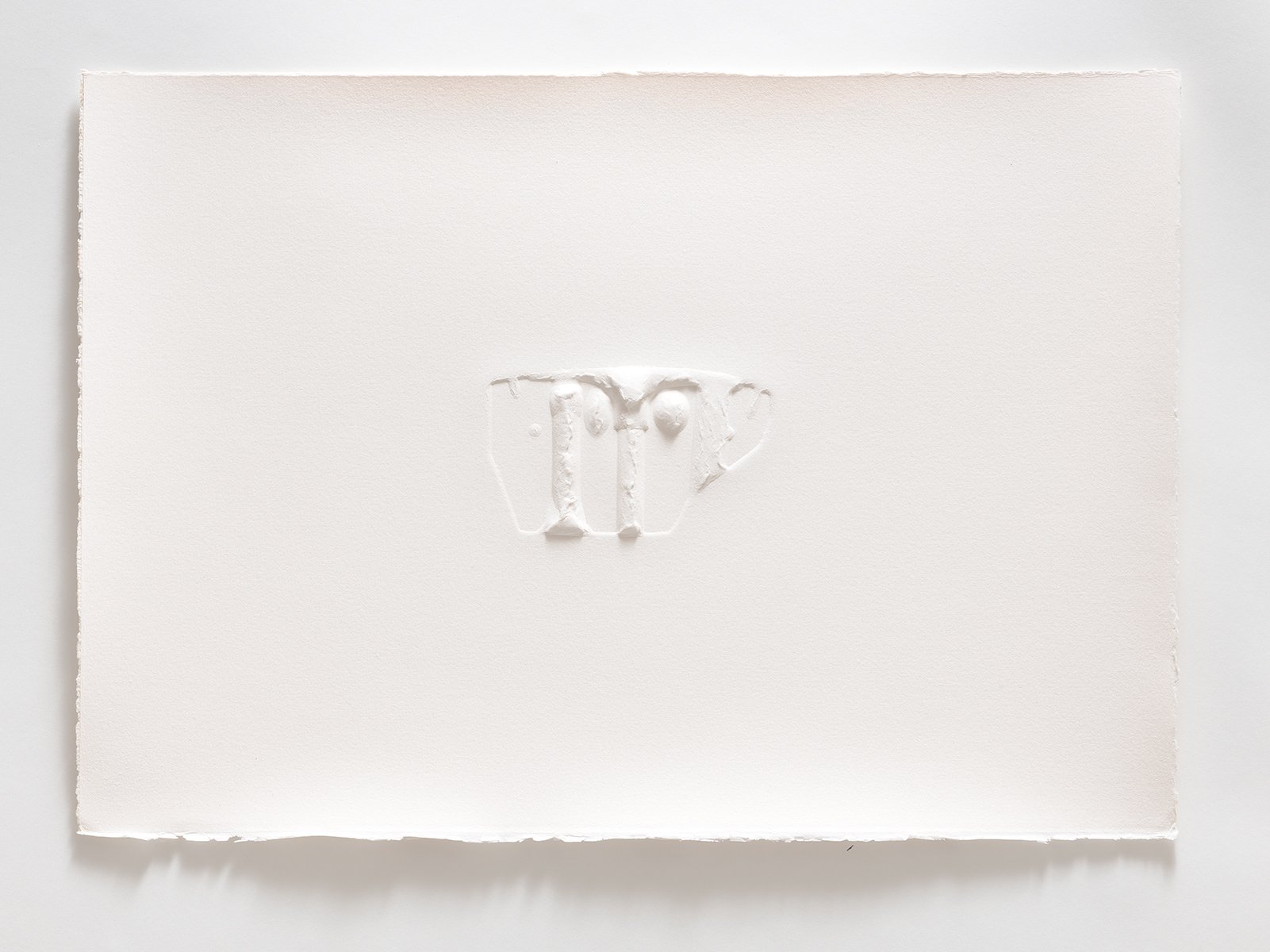RESIDENZA CARS OMEGNA 2022 - Cartografia sensibile 2022, presso l’ex fabbrica di giocattoli Faro / in the former Faro Toys factory archive.
Osservando la vastità del materiale disponibile all’interno della fabbrica, ho scelto due diversi elementi di produzione contraddistinti da una forte valenza grafica: stampi in metallo e fustelle in legno, con i quali ho realizzato due cicli di stampe su carta a partire da oggetti tridimensionali. Queste stampe sono ottenute dall’impressione diretta di calchi in metallo utilizzati per la fusione di parti di giocattoli in alluminio utilizzati dalla Faro tra 1948 ed il ’62. La sfida è stata quella di di tradurre la durezza ed il carattere tagliente del metallo in delicate tracce in polpa di cellulosa.
————————————————————————————————————————————————
Seeing the vast amount of material remaining inside the factory, I was attracted to several elements with high graphic value previously adopted in toy production and used them to make a cycle of prints on paper from three-dimensional objects. These prints are obtained from the direct impression of metal casts Faro used between 1948 and '62 to cast parts of toys in aluminum. The challenge was to translate the metal’s hard sharpness into delicate turns on paper.
Caso armato, 2022 - stampa a secco su carta Zerkall 600 gr - cm 56x38
Messa 46, 2022 - stampa a secco su carta Zerkall 600 gr - cm 56x38
E’ interessante citare che Caso armato e Messa 46 sono stampe tratte da stampi fabbricati nel primo dopo guerra e ottenuti dal taglio diretto di porte di carro armato quando ancora non era reperibile altro tipo di metallo.
———————————————————————————————————————————————————————————————-
Interestingly, Caso Armato and Messa 46 are prints taken from a cast of the door of a tank made right after WW II when no other type of metal was yet available.
C.A., 2022 - stampa a secco su carta Zerkall 600 gr - cm 56x38
M46, 2022 - stampa a secco su carta Zerkall 600 gr - cm 56x38
F21, 2022 - stampa a secco su carta Zerkall 600 gr - cm 38x56
Mokine, 2022 - stampa a secco su carta Zerkall 600 gr - cm 38x56
P186, 2022 - stampa a secco su carta Zerkall 600 gr - cm 39x38
P9, 2022 - stampa a secco su carta Zerkall 600 gr - cm 38x54
AP48, 2022 - stampa a secco su carta Zerkall 600 gr - cm 27x38
AP48, 2022 - stampa a secco su carta Zerkall 600 gr - cm 27x38
L’altro ciclo che ha preso vita durante la residenza è costituito da stampe tipografiche realizzate utilizzando delle fustelle, ovvero strumenti per la realizzazione di cartoni e scatole per imballaggio, di cui mi sono servita come matrici.
Le fustelle sono strumenti di taglio composte da tavole di legno nelle quali sono incastonate lame di ferro protette da strisce in gomma, le stampe sono state dunque realizzate inchiostrando le parti in gomma, calibrando volta per volta la pressione esercitata dal torchio al fine di non tagliare il supporto cartaceo.
—————————————————————————————————————————————————————————————————
The other cycle that came to life during the residency consists of typographic prints made using die-cuts-wood panels used in the production of cardboard packing boxes that I used as dies.
Die-cuts are cutting tools made of wooden boards in which iron blades protected by rubber strips are embedded. I made my prints by inking the rubber parts and then calibrating the pressure exerted by the press case by case in order to avoid cutting the paper underneath.
APMAT2 Ristorante italiano, 2022 - stampa tipografica
2715 Barbie, 2022 - stampa tipografica su carta uso mano - cm 50x62
A7031 Periscopio, 2022 - stampa tipografica su carta u
A856 Mukka G, 2022 - stampa tipografica su carta uso mano - cm 50x62
A9123, 2022 - stampa tipografica su carta uso mano - cm 50x62
1538A, 2022 - stampa tipografica su carta uso mano - cm 62x50
A5076A, 2022 - stampa tipografica su carta uso mano - cm 62x50
P407, 2022 - stampa tipografica su carta uso mano - cm 50x62
Foto François Fernandez
A5076A, 2022 - stampa tipografica su carta uso mano - cm 62x50




















